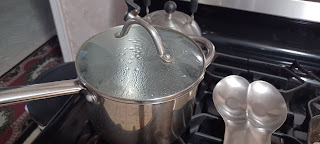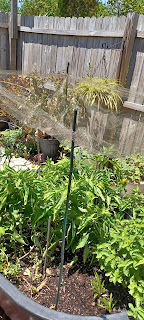This shrimp and spaghetti meal is quick and easy to pull together. With only a handful of ingredients, you can have it ready to go in no time.
Last week my husband and I were trying to come up with something to have for dinner. We both wanted something "different", meaning, we hadn't eaten it in the last week or so. We each made suggestions when he said "why not do the shrimp and spaghetti thing you do with the Italian dressing."
Sounded good to me, and we were soon eating and enjoying it.
Note: I don't measure when I prepare this, so my amounts are estimates. If you are using leftovers, take what you have and go from there. Experiment and play around with it.
Ingredients
- Shrimp - I used frozen, raw shrimp; you can also use cook shrimp and this would be a great way to use up leftover shrimp
- Spaghetti or other pasta your family enjoys - if you have leftover pasta, start with that!
- Green onion, chopped - regular onion bothers both our stomachs, but green onion makes a good substitute for us
- Bottled Italian salad dressing - I have never found a homemade version I like better, but if you have one, please send it to me!
- Butter or oil to cook the shrimp in
- Salt and pepper
- Garlic powder (again, garlic bothers both our stomachs, but garlic powder does not so we use it instead)
Instructions
Put the water on to boil to cook the spaghetti.
Melt butter in a cast iron skillet then add shrimp. Season with pepper and garlic and cook.
When water comes to a boil, add salt and return to a boil. Add pasta and stir in well so it cooks evenly.
When shrimp are almost done, stir in the green onion and cook them.
When pasta is cooked, drain well and return to pan. Stir in the shrimp, then pour in some Italian dressing. Do NOT add too much to begin with - add some, stir in well, then add more if needed.
Spoon onto a plate or bowl and top with freshly grated parmesan cheese if desired.
Serving note - I often serve peas or green beans with this, and I usually just mix them in with the pasta, coating the vegetable with the dressing as well. This would be another way to use up leftover vegetables.










